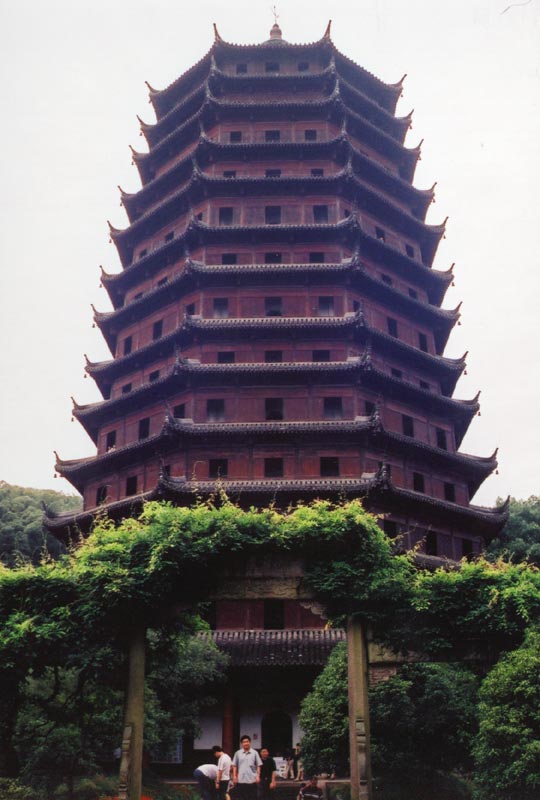by MICHAEL KLARE
 The Liuhe Pagoda, or Six Harmonies Pagoda, in Hangzhou, 60 m (196 ft) in height, erected in 1156 and fully constructed in 1165 AD. PHOTO/Wikipedia
The Liuhe Pagoda, or Six Harmonies Pagoda, in Hangzhou, 60 m (196 ft) in height, erected in 1156 and fully constructed in 1165 AD. PHOTO/Wikipedia
There’s no other imperial tradition like it. For two millennia, dynasty after dynasty rose and fell, spread and shrank, reaching into Southeast Asia and far out into the steppes of Eurasia, its commercial fleets — 3,500 ships in the fourteenth century — voyaging as far as Africa. It’s true that ours is a remarkably westernized and, more recently, Americanized version of history that has left little place for the tale of imperial China, but what a history it had. It wasn’t known as the “Middle” or “Central Kingdom” for nothing. And now, of course, it’s back, a new “dynasty,” even if it goes under the more modern rubric of a “communist” state. The latest version of imperial China has a growing military and plans to create a trillion dollar “One Belt, One Road” infrastructural grid of pipelines, rail lines, highways, and other links of every sort across significant parts of Southeast and South Asia, as well as the former Central Asian “stans” of the Soviet Union and Iran, a future grid that’s meant to reach all the way to Europe. At least in the expansive dreams of China’s new rulers, such a network of infrastructure would bind a vast world of trade and wealth to Beijing.
It’s a vision that should take your breath away and, as TomDispatch regular Michael Klare writes today, it has indeed done so in at least one key precinct of this world of ours: the Pentagon. There, China’s One Belt, One Road vision is being greeted not with enthusiasm but with anxiety and consternation. The military of the reigning superpower, the last one, the only one, is increasingly unnerved by the latest version of a Chinese dynasty and responding in ways that should make all of us anxious. Klare describes the obvious dangers that could flow from an American urge to militarily contain the latest version of the Middle Kingdom, as a new great power rivalry rises on a planet that’s been bereft of them for more than a quarter of a century.
Unfortunately, when you’re looking at the long record of China and the shorter but distinctive one of that last superpower, history can’t offer us any clues about one thing: What does it mean to have a new and rising power on a planet that shows every sign of itself going down? What does it mean for two powers to face off, both of whom stand a significant chance of seeing some of their major coastal cities flooded and destroyed in the century or less to come? What exactly is the point of it all? Tom
Girding for Confrontation
The Pentagon’s Provocative Encirclement of China
By Michael T. Klare
On May 30th, Secretary of Defense James Mattis announced a momentous shift in American global strategic policy. From now on, he decreed, the U.S. Pacific Command (PACOM), which oversees all U.S. military forces in Asia, will be called the Indo-Pacific Command (INDOPACOM). The name change, Mattis explained, reflects “the increasing connectivity between the Indian and Pacific Oceans,” as well as Washington’s determination to remain the dominant power in both.
What? You didn’t hear about this anywhere? And even now, you’re not exactly blown away, right? Well, such a name change may not sound like much, but someday you may look back and realize that it couldn’t have been more consequential or ominous. Think of it as a signal that the U.S. military is already setting the stage for an eventual confrontation with China.
Tom Dispatch for more
